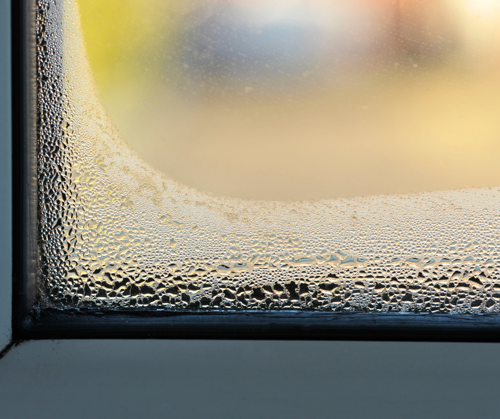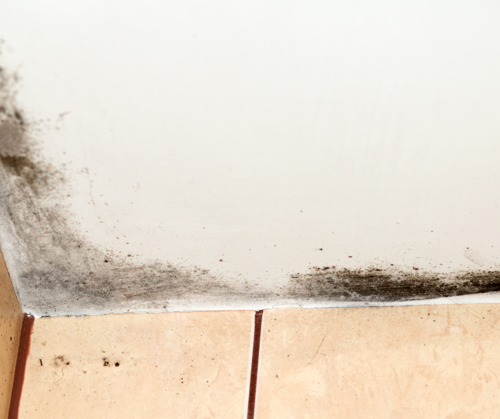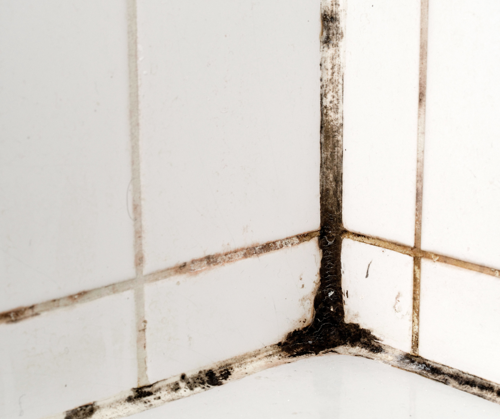Damp, mould and condensation
There are easy ways to tackle these problems. Here’s how.
If you have damp, mould, or condensation in your home, contact us as soon as you notice it.
We will arrange for one our repairs inspectors to visit you. They'll take a look, discuss the possible cause, log any necessary repairs, and give you advice and guidance - if the problem is related to condensation.
Condensation happens when water vapour in the air meets a cold surface (e.g. a window or a wall). The warm air meeting the cold surface turns the water vapour into visible droplets of water.
Water running down windows, damp patches on walls and un-insulated ceilings are the obvious signs that there is condensation in the home.
Left untreated, condensation can lead to mould.

Water running down windows, damp patches on walls and un-insulated ceilings are the obvious signs that there is condensation in the home.
Other signs can include:
- Streaming windows and walls
- Damp areas on walls, especially behind furniture and in corners
- Peeling wallpaper
- Blackened window frames
- Growing mould


Day to day activities like cooking, washing, bathing and ironing all add to the problem - even breathing contributes to adding water vapour into the air.
Everyone wants to cut down on losing heat from their home - but these measures (like insulation, draught proofing, double glazing) trap the air inside.
It's a worthwhile trade off - but we all need to manage condensation, because it can lead to damp and mould.
Yes. Mould on surfaces such as wallpaper, on the edges of window frames or on tiles can be washed down with a mild solution of white distilled vinegar.
The acid in the vinegar kills the mould spores. It needs to be left on for up to an hour then wiped off.
If the mould reappears, then the Trust can be contacted to treat it with a fungicidal solution - but vinegar will work in the majority of situations.
On clothes, allow mildew to dry thoroughly before washing or dry-cleaning any affected items.
Top tips
The solution for mould is proper ventilation. You can only permanently get rid of mould by reducing the build up of moisture in your home.
Do
Try to keep the temperature in your home at a consistent temperature (between 18-21°C).
Wipe away water droplets (condensation) from the windows, tiles and other surfaces before mould grows.
Keep your internal doors closed, particularly when cooking and bathing, and leave a window open until the moisture in the air and on the surfaces evaporates.
Keep your home well ventilated by keeping extractor fans turned on, opening trickle vents to the windows and opening windows – especially when cooking, after bathing and when drying clothes inside.
We don’t recommend drying clothes on maidens or radiators, but if you need to, ensure you ventilate the room properly to allow the moisture from the clothes to escape.
Don't
Leave the kettle or a pan boiling longer than necessary.
Leave the kitchen and bathroom doors open when cooking or bathing.
Dry clothes on a radiator without ventilating the room or use a front vented tumble dryer without a venting tube discharging outside.
Have furniture rested against walls, this prevents air circulation to that area.
Putting the heating on in short bursts at a high temperature.
Block wall vents, trickle vents or extractor fans, especially where any form of gas heating is in use.
Leave condensation to run down windows, causing puddles on the sill.
Allow mould to build up on any surface.
How we can all better manage the moisture in our homes
This guidance comes from the UK Centre for Moisture in Buildings. It explains all you need to know manage the moisture that exists in all our homes.
Who we work with

Envirovent are our suppliers. They're experts in ventilation. Always check for ID when you're letting the Trust or our contractors into your home.
Getting in touch with us
If you're experiencing damp, mould or condensation in your home, get in touch with us as soon as you notice it.
If you've got a question about ventilation (or you feel ventilation in your home isn't quite right), get in touch with us. We'll arrange an inspection of your home and agree the best course of action with you.




